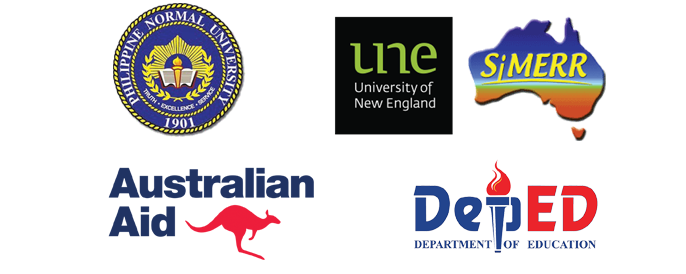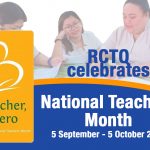‘How the PPST helps my professional practice as a master teacher’
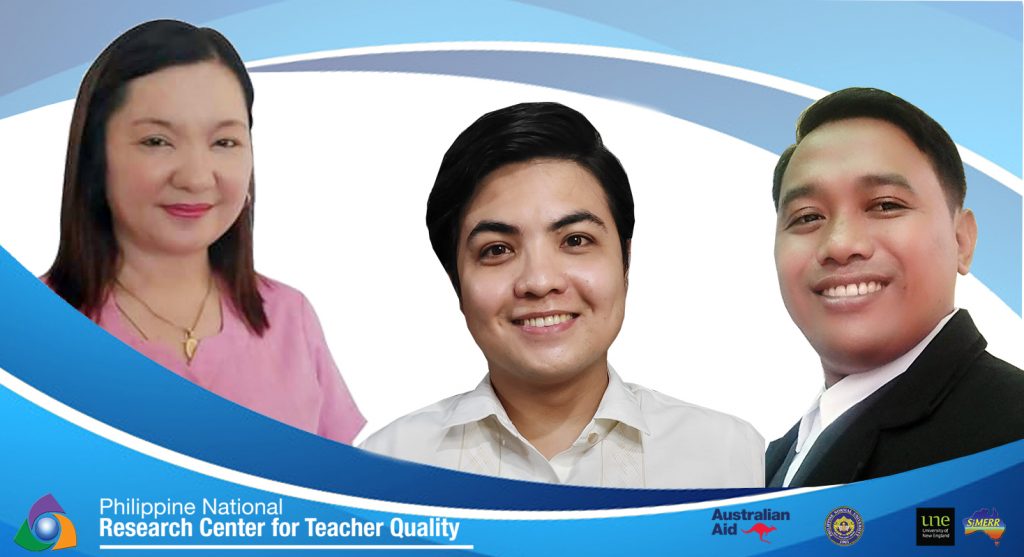 Dr. Rex Briones, Dr. Mirasol Sayman-Morales, and Mr. Lester John Cajes are teachers in different public schools located respectively in Visayas, Mindanao and Luzon. They speak different native languages, teach various school levels, handle different subjects, and have never worked with each other. Although unique in their respective teaching experiences, being master teachers at the Department of Education makes them share the same expectations of professional practice and teaching quality, thanks to the Philippine Professional Standards for Teachers (PPST).
Dr. Rex Briones, Dr. Mirasol Sayman-Morales, and Mr. Lester John Cajes are teachers in different public schools located respectively in Visayas, Mindanao and Luzon. They speak different native languages, teach various school levels, handle different subjects, and have never worked with each other. Although unique in their respective teaching experiences, being master teachers at the Department of Education makes them share the same expectations of professional practice and teaching quality, thanks to the Philippine Professional Standards for Teachers (PPST).
Developed and implemented by DepEd with support from RCTQ in 2017 (DO 42, s.2017), the PPST defines professional practice expected of teachers across career stages (Beginning, Proficient, Highly Proficient, and Distinguished). Master teachers are expected to be at the Highly Proficient career stage.
How does the PPST impact on the work of master teachers?
More learner-centered
Before the PPST was introduced, Dr. Rex C. Briones—Master Teacher II at Cabacungan National High School in Dulag, Leyte—admitted that he used to write “lesson plans that were brief and sometimes a replication of what I already used years ago,” without minding the specific needs of learners.
“With the PPST, I realized that I had been doing it wrongly all along. So I started varying my teaching methods, incorporating various teaching strategies (collaborative learning, project-based, problem-based and others) to satisfy the different indicators of the PPST especially those on higher-order thinking skills, and creative thinking,” Dr Briones said. “Learners are now my primary consideration when making lesson plans.”
During this pandemic, his school—Cabacungan National High School—uses printed modular distant learning where teachers produce learner activity sheets as supplementary learning materials.
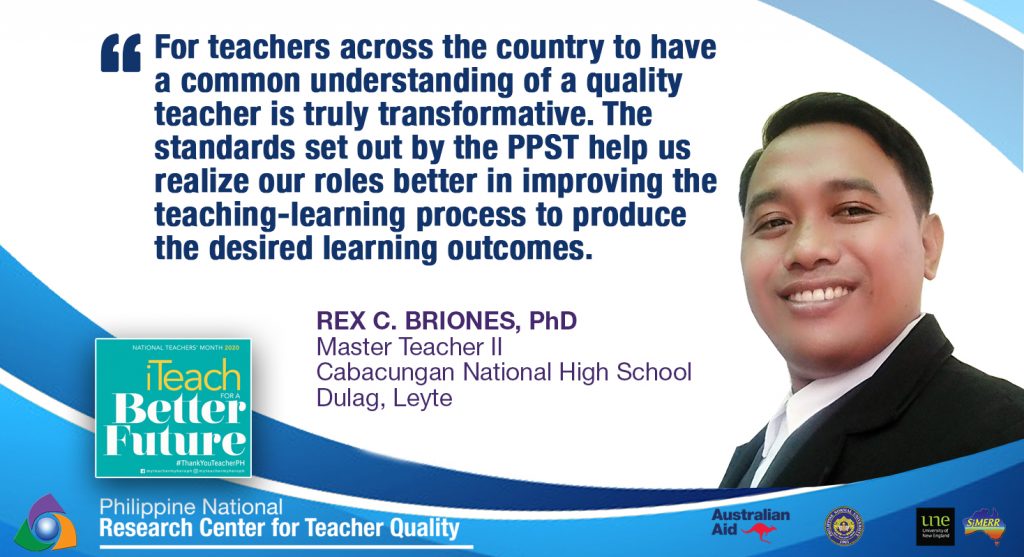 “The PPST indicators have been very instrumental to me in assessing the learner activity sheets as they enable me to do critical reflection” he said.
“The PPST indicators have been very instrumental to me in assessing the learner activity sheets as they enable me to do critical reflection” he said.
“For teachers across the country to have a common understanding of a quality teacher is truly transformative. The standards set out by the PPST help us realize our roles better in improving the teaching-learning process to produce the desired learning outcomes,” Dr. Briones said.
Engaging with parents
For Dr. Mirasol Sayman-Morales—Master Teacher II at the A. Mabini Elementary School in Davao City—mentoring goes beyond helping fellow teachers. She also mentors parents on how to help their children when classes start on October 5.
“During this pandemic, the PPST emphasizes that my role as a teacher is not confined in the walls of my classroom or in my engagement with my colleagues. It reminds me that my role includes engaging with the wider school community, particularly the parents and guardians, to contribute to the learning process of my students,” Dr. Morales said.
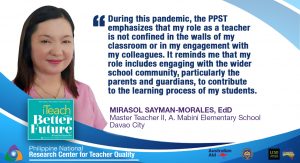 The school where Dr. Morales teaches will implement modular learning when classes resume.
The school where Dr. Morales teaches will implement modular learning when classes resume.
“I work closely with parents in implementing the modular approach. We schedule the releasing of modules both in our school and at designated areas,” shared Dr. Morales. “As soon as the modules reach the learners’ homes, I utilize all means of communication including the social media to mentor parents on how to guide their children in using the modules.”
As a master teacher, Dr. Morales said the PPST indicator 6.2.3 “enables me to guide my fellow teachers to strengthen relationships with parents/guardians and the wider school community to maximize their involvement in the educative process.”
More reflective in lesson planning and delivery
While Mr. Lester John Cajes—Master Teacher I at Las Piñas National High School in Metro Manila—is fond of incorporating exciting activities in each of his lessons, the PPST made him realize that not all of these activities could work.
“My students’ needs, strengths and interest, as well as our learning space are now my foremost considerations when I develop my instructional plans and materials. I am now accustomed to integrating my lessons in English with topics from Math, Science and other learning areas. It is fulfilling when learners are able to assimilate such pieces of learning during classroom discussions. It is simply amazing how the PPST made me realize to integrate content, research, use of language, classroom management, assessment and other dimensions that support effective teaching and learning,” Mr. Cajes shared.
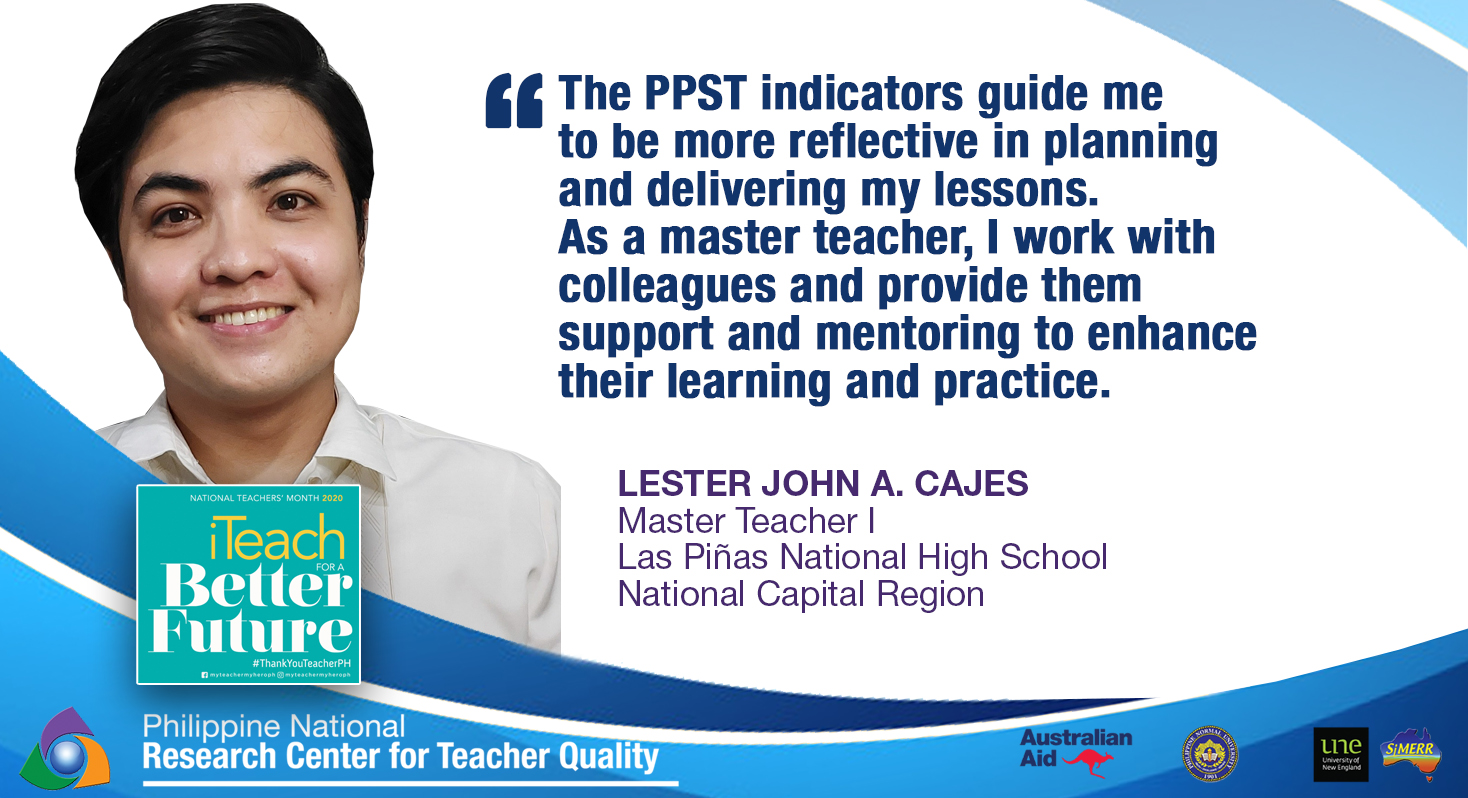 “The PPST indicators guide me to be more reflective in planning and delivering my lessons,” Mr. Cajes said. “As a master teacher, I work with colleagues and provide them support and mentoring to enhance their practice.”
“The PPST indicators guide me to be more reflective in planning and delivering my lessons,” Mr. Cajes said. “As a master teacher, I work with colleagues and provide them support and mentoring to enhance their practice.”
Mr. Cajes remembered talking to a fellow teacher and hearing how she was burned out with so many things directly and indirectly related to teaching.
“I knew she had a great potential, so I did not want to let her succumb to hopelessness. With constant coaching—which is one of the most essential features of the PPST—I was able to help her regain her passion for teaching, and enhance her teaching competence even more,” Mr. Cajes said.
As delivering quality education has become challenging during this pandemic, Mr. Cajes said “ I am personally grateful that the teacher standards have reoriented me on the positive use of ICT and other learning resources. Now that the demand for it has increased, I know that I can count on my ability to devise materials that work in different learning contexts. This time also requires us to be more mindful of our learners’ situation, that some of them might be in extremely difficult circumstances. Consequently, we have to think of ways, strategies and means of communication that are more encouraging for them.”
Aside from nurturing a culture of mentoring, the PPST guides teachers to know what to teach and how to teach it (Domain 1), maintain a learning-focused environment (Domain 2), respond to learner diversity (Domain 3), plan and design effective instruction (Domain 4), use a variety of assessment tools to inform and enhance the teaching and learning process (Domain 5), establish community relationships and uphold professional ethics (Domain 6), and engage in professional reflection and assume responsibility for personal professional learning (Domain 7). (Arvin Yana/RCTQ)
- Download the full copy of the PPST
- View the PPST explainer video:


